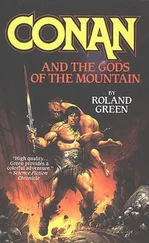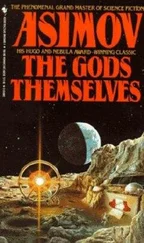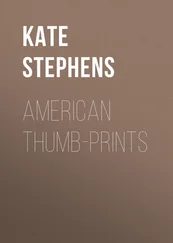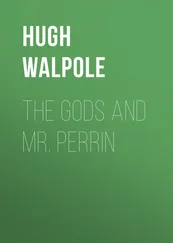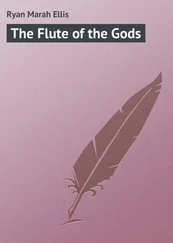“Cheese? The girls used what was left three days ago when they made lasagne.”
“In that case, it’s definitely my fault for eating something masquerading as cheese,” said the professor with a smile, then winced again. “I’ll be fine! You and the students need a break. I don’t want to keep you here on my account.”
“You do realise we’re taking the poop-mobile with us,” advised Govannon, glancing over his shoulder to where Hestia was heaving the heavy trailer onto the towing hitch. Impressively, she was using just one hand so the other could hold her nose. “It badly needs to be emptied but that’ll leave you with nowhere to go if your bowels demand likewise.”
“I’ll manage,” Cadmus reassured him. “You need to get going!”
Govannon gave a shrug and watched the professor walk back into the dome. For some strange reason Cadmus had now developed a limp.
“Is he not coming with us?” asked Xuthus, sidling closer.
“It seems not,” mused Govannon. “Professor Cadmus appears to be inflicted with a debilitating case of bad acting and needs to lie down for a while. Shall we make a move?”
Xuthus frowned, puzzled that anyone would want to pretend to be ill on today of all days, but nodded and trotted obediently towards the rear of the transport. Hestia was helping Urania carry the final load of empty food crates through the vehicle’s hatch. Govannon moved to close the airlock to the domes and then paused, for on the far side of the dome beyond, a distant figure was hurriedly making his way into the tunnel to dome two. Xuthus looked to see what had caught Govannon’s attention and frowned again when he saw that the professor’s limp had miraculously disappeared.
“Fine,” Govannon muttered. “Drool in peace over your so-called aliens!”
* * *
Professor Cadmus paused at the end of the tunnel and listened to the dwindling roar of the hangar’s air escaping into the Falsafah atmosphere. Moments later, he felt a faint quiver at his feet and pictured the heavy transport trundling away into the Arallu Wastes, then this too faded to leave just the familiar background hum of the life-support system. On the other side of dome one, red lights flashed at the hangar entrance, warning the unwary that the airlock was sealed and the outer hangar door open.
“Finally!” he murmured. “Time to do some proper archaeology.”
He reached into his jacket and withdrew his slate from the large inside pocket designed for such a device, eager to read again the last message from his sponsors. Tau Ceti’s sole servermoon orbited the more hospitable world of Aram, which due to freak planetary geometrics was always on the opposite side of the sun from Falsafah. The University had been denied formal access to the Que Qiao Lagrange communication relay, which otherwise allowed non-ED signals to reach the servermoon without being swamped by radiation pouring from Tau Ceti itself, so had to rely on visits from the expedition’s ship to send messages home. What Doctor Jones and his students did not know was that Cadmus was secretly in touch with his employers on Earth via the local Falsafah police.
As an experienced archaeologist, Cadmus was uneasy that his Alien Encounters Board sat within Que Qiao’s huge research and development agency. He had been equally disquieted when he learned his new employers knew of his standing within the Dhusarian Church, something he had concealed from fellow scholars for many years. Yet the latest message from Earth, not to mention his sneaky peek several weeks ago at what the student Ravana had on her personal slate, left him in no doubt he was on Falsafah for all the right reasons.
In no time at all he was standing once more on the edge of Govannon’s new trench in dome two, gazing down at the exposed corner of the star chamber. Lifting his slate, he thumbed the touch-screen display and read again the all-important missive from Earth:
Proceed as advised, preliminary survey only. Concur with recommendation that initial investigation be conducted whilst Jones off site. Findings to be reported in strict confidence.
Professor Cadmus smiled and tucked the slate back into his jacket. A visit to the nearby tool store equipped him with an oxygen mask and a fully-charged lantern. After clipping the mask and lamp to his belt, he picked up a mattock, walked to the ladder and descended to the bottom of the trench.
Moving cautiously, he entered the space between the excavated parallel walls and idly brushed his fingers against the smooth surface, all the way to the sharp edges of the strange hieroglyphs etched into the ancient glass. Before him stood the two-metre graceful glass arch that Cadmus knew had been raised by alien hands. Down in the pit, the resemblance to a doorway was stronger than ever.
“Knock knock,” he murmured, lifting the mattock. “Anyone home?”
* * *
Arallu Depot was two hundred kilometres south of the excavation. Despite the lack of a road, the easy terrain made the journey possible in four hours. The Arallu Wastes lay on an ancient coastal plane, north of a desiccated ocean and west of a range of mountains forced up by long-dormant tectonic activity. Satellite radar imaging had long revealed a cluster of unusual structures half-buried alongside dry river beds, some of which were intriguing enough to justify maintaining a supply depot in Arallu at one of the few spots where water could be pumped from the ground. Surveys produced endless evidence of ancient plants and animals, including massive fossilised skeletal remains of creatures that defied description and awaited proper scientific study. It was these ancient bones, coupled with the fierce winds that now carved the once-fertile delta, that had led early Arab explorers to name the bleak, dreary region after the mythical abode of the dead.
Tau Ceti hung low in the west as the expedition’s transport arrived at the airstrip. The spaceplane Sir Bedivere had landed and stood linked to the enclosed walkway projecting from the small terminal building on the far side of the depot’s dome. The silver ship was a sleek, stubby-winged Skylon Interstellar Mk IV, the latest of a successful line of Earth-class spacecraft to come from the Rolls-Royce aerospace factories of Mercia. The university had chartered the ship for the duration of the expedition, though Govannon was convinced the reason the crew never wanted to stay on Falsafah any longer than necessary was because they were flying black-market deliveries on the side.
The transport slipped past the wind-pump tower with its ferociously-spinning vanes, through the shallow pool of water left by leaking pump-head pipes and onwards to the rear of the dome. The depot’s transport hangar was part of the terminal building, the roof of which was covered by solar panels that powered the electrolysis plant, which in turn extracted hydrogen and oxygen from the underground stream. After getting too close to the spaceplane during an engine test, Govannon preferred to go the long way around.
“Are we there yet?” asked Urania, teasing him. She sat next to him at the front of the vehicle, having beaten Xuthus to the seat normally taken by Professor Cadmus.
“Funny girl,” Govannon muttered wearily. Urania had not stopped talking throughout the four-hour journey and it was this, not the long drive, that had exhausted him. “Do you want me to send you back to Ascension?”
“Is that what you did with Ravana?”
“Cadmus said she just got fed up and went home,” replied Govannon.
“She left all her stuff behind,” said Hestia. “Her clothes, slate, everything.”
“Good riddance,” muttered Urania. “Bitch.”
“Urania!” exclaimed Govannon. “There’s no need for that!”
“She’s one of those refugees from that crazy asteroid,” retorted Urania. “There’s hundreds of them at Newbrum, all wanting our jobs. Besides, who goes around with a face scarred like that? That sort of thing is easy to fix these days. She’s a freak.”
Читать дальше



